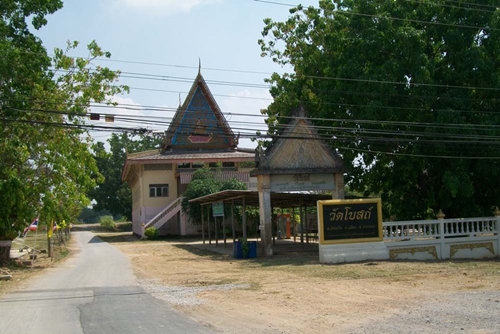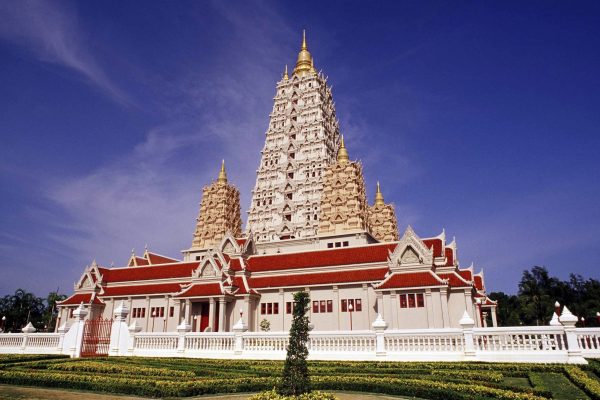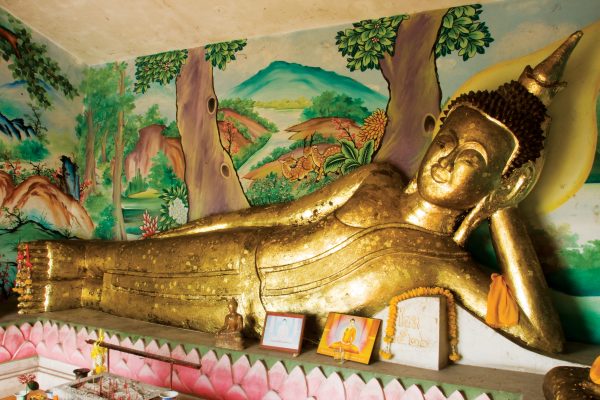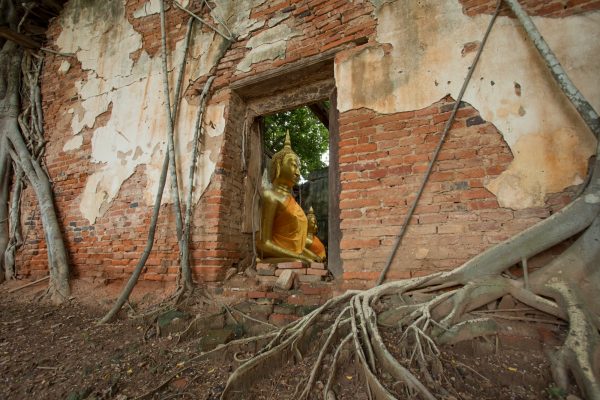
Wat Bot
Wat Bot was built in Ayutthaya period. Later, the Temple was renovated on April 11, 1882. The old Ubosot or ordination hall of the Ayuthaya period, which has been respected by the local villagers and nearby residents, has a traditional style called “Mahaut”(without openings in all the side walls, except one door). However, the renovation work made it different from the original style, including its door arch and window frames, and only a front door and two windows on each side can be evidenced of the Ayutthaya style of art. The ordination hall is surrounded by niches of double sandstone boundary stones in the Chinese style of art. One interesting is located behind the ordination hall. Since it was not restored, it is on dilapidated that it is impossible to structure, it can be noted that this stupa is similar to those built in general in the Ayutthaya period, having a square relic chamber with 16-indented corners, and protruding niches in all four directions. The eastern side was made into a large chamber, but it was secretly dug and left in a damaged condition. Moreover, plenty pieces of red and grey sandstone Buddha images having lap widths of 0.30-1 metre were found.Considering the art appearing on the images, it was dated back to the 15-17 centuries
Wat Bot was built in the Ayutthaya period and left abandoned in a ruined condition. It was restored on 11 April, 1882. The Maha Ut-shaped ubosot in the Ayutthaya period revered by the locals had been repaired that caused its pattern to be different from the original one including the door arches and window frames resulting in not having any decorations, but only 1 entrance door and 2 windows on each side remaining, which is the only evidence that confirms it belongs to the Ayutthaya art style. There are pairs of sandstone boundary markers under the niches of the Chinese art style surrounding the ubosot. The highlight of the Temple is the original Phra Prang (stupa) located behind the ubosot. Since it had not been restored, the prang was so ruined that it was very difficult to study the pattern; however, from the remaining structure, it was assumed that the features of this prang were similar to those prangs generally built in the Ayutthaya era. Ruean That or the important part of the prang features a square shape with 16 indented corners and niches stretching out at all 4 directions. On the east side, there was a hole made into a large arch, but it was damaged by smugglers. In addition, plenty of Buddha image parts made of red and gray sandstone were found with the measurements ranging from 0.3 – 1-meter wide lap spans. Based on the art on the Buddha images, it was assumed that they are aged around the early 16th and 17th centuries.




